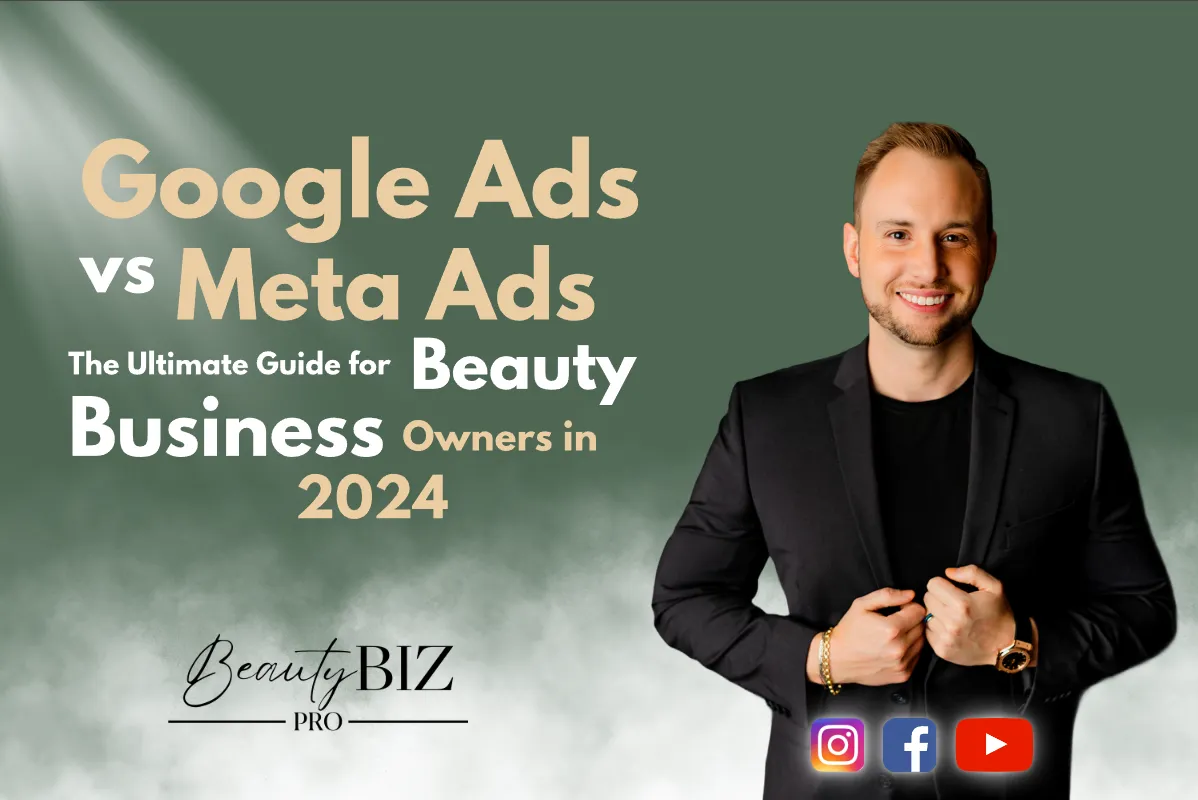
Google Ads vs Facebook Ads: The Ultimate Guide for Beauty Business Owners in 2025
Google Ads vs Facebook Ads: The Ultimate Guide for Beauty Business Owners in 2025

In today's digital landscape, beauty business owners face a crucial decision when it comes to advertising: Should they invest in Google Ads or Facebook Ads? As industry experts who work with hundreds of beauty professionals each week, we've gained valuable insights into this ongoing debate. Let's dive deep into the world of digital advertising and explore which platform might be right for your business.
Marketing in 2024: Why Ads Matter More Than Ever
“Even with a great product, if you’re not running ads, you might as well be invisible.” This powerful statement encapsulates the essence of modern marketing dynamics, where visibility is key to survival. In today’s highly competitive marketplace, having a great product or service is no longer enough to guarantee success. Businesses are facing unprecedented challenges in standing out amidst the noise of endless options. Advertising has shifted from being a supplementary tactic to an absolute necessity. For brands aiming to thrive in 2024, running ads isn’t just about boosting sales; it’s about staking a claim in an increasingly crowded digital landscape.
The Importance of Paid Advertising
The discussion highlights a significant evolution in how businesses connect with their audiences. As algorithms become increasingly selective, relying on organic growth through social media alone is no longer sufficient. The speakers candidly state, “You can have amazing content and still get one like or zero likes,” underscoring the frustrating reality many businesses face. In 2024, organic reach reached an all-time low, with platforms prioritizing paid content and sponsored posts. This means that even the most engaging, high-quality content can struggle to reach its intended audience without the support of a robust ad strategy.
Paid advertising serves as a powerful equalizer, giving businesses of all sizes the opportunity to compete for visibility and engagement. Platforms like Google, Facebook, Instagram, and TikTok have refined their ad targeting capabilities, enabling brands to reach highly specific demographics with precision. This makes paid ads an indispensable tool for scaling, whether you’re a small business trying to get off the ground or an established brand looking to maintain relevance.
The Current State of Social Media Marketing
Before we delve into the specifics of each platform, it's essential to understand a fundamental truth about social media marketing in 2024: organic reach is nearly dead. Gone are the days when you could grow a substantial following simply by posting great content and using the right hashtags. The reality is that social media platforms have become "pay-to-play" environments.
Even businesses with excellent content and consistent posting schedules often struggle to gain traction without paid advertising. This shift has created new challenges for beauty business owners, but it has also leveled the playing field in many ways. The good news? With the right strategy, even a modest advertising budget can help you stand out in your market.
Understanding Google Ads: The Search Giant
What Are Google Ads?
Google Ads are paid, highly targeted advertisements that appear in Google's search results, offering businesses a powerful way to reach potential customers at the exact moment they’re searching for relevant products or services. These ads typically appear at the very top of the search engine results page (SERP), above the organic search results, and are identified with a small label like “Sponsored” or “Ad.” This prime placement makes them one of the most effective tools for increasing visibility and driving traffic.
When a user searches for terms related to your business, such as “permanent makeup in Central Florida” or “microblading near me,” your ad has the potential to be the first thing they see. This visibility is invaluable in a crowded digital marketplace, where consumers often make decisions based on the first few results they encounter. With Google Ads, you’re not waiting for your site to rank organically; you’re positioning your business directly in front of motivated customers who are actively looking for what you offer.
How Google Ads Work
Google Ads operates on a pay-per-click (PPC) model, meaning you only pay when someone clicks on your ad. This ensures you’re spending your advertising budget on users who are genuinely interested in your services. You can set a daily budget and maximum bid for keywords, allowing you to control costs while optimizing performance.
The process begins with selecting keywords—specific words or phrases users might type into Google when searching for a business like yours. For example, if you’re an esthetician offering permanent makeup services, keywords like “microblading near me,” “brow tattooing,” or “lip blush services” might be part of your strategy. Google uses these keywords to determine when your ad should be displayed.
Additionally, Google Ads provides advanced targeting options, allowing you to narrow your audience based on factors like location, language, device type, and even the time of day. For instance, if your salon is located in Central Florida, you can ensure your ads are shown to users within a specific geographic radius, maximizing relevance and minimizing wasted clicks.
The Power of Search Intent
One of the most significant advantages of Google Ads is that they capture high-intent customers. When someone searches for your services on Google, they're actively looking for what you offer. This targeted approach often leads to higher-quality leads, as these potential customers are already in the research or buying phase of their journey.
The Investment Factor
While Google Ads can provide high-quality leads, they typically require:
An optimized Google Business profile
A well-designed website
A larger budget compared to social media advertising
Understanding of search engine marketing principles
Why Google Ads Lead the Pack
Among the various advertising platforms, Google Ads stands out for its ability to deliver immediate results. Unlike traditional methods of search engine optimization (SEO), which can take months (or even years) to yield tangible outcomes, Google Ads offers businesses a fast-track route to the top of search results. As one speaker aptly put it: “Google Ads help you rank number 1 without the messy SEO and taking a million years for you to rank number 1.”
This isn’t to say that SEO lacks value—far from it. However, the ever-changing algorithms and the competitive nature of search rankings can make it an unpredictable and labor-intensive process. For businesses needing instant visibility, Google Ads provides a solution that bypasses these hurdles. By bidding on high-intent keywords, companies can position themselves directly in front of consumers who are actively searching for their products or services.
Moreover, the versatility of Google Ads allows for campaigns tailored to various business goals, from driving website traffic to increasing in-store visits or boosting e-commerce sales. When combined with data analytics, these ads provide actionable insights, enabling businesses to continuously refine their strategies and maximize return on investment (ROI).
The Double Combo: Google Ads and Organic Search
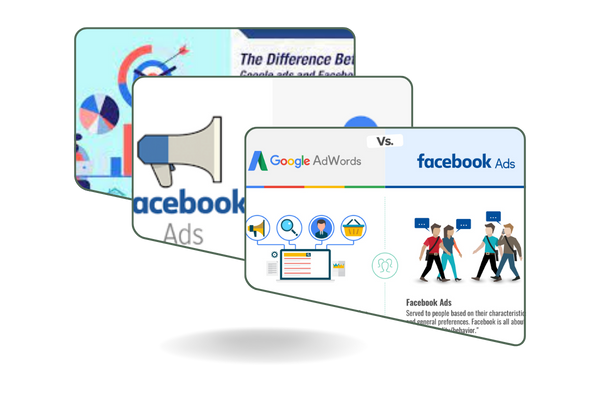
A fascinating concept explored in the conversation is the “double combo” strategy, where businesses simultaneously invest in Google Ads while maintaining a strong organic presence. An example from the speakers shared, “Even with a company ranking number 1 organically and having ads running, we notice our conversion rates increase dramatically.” The idea is simple: showing up in multiple spots creates a powerful presence and boosts brand trust.
Key Benefits of Paid Advertising
Increased Click-through Rates
One of the most significant advantages of combining organic and paid advertising is the synergistic effect on click-through rates (CTR). When users see a brand appear both in organic search results and as a paid ad, it creates a sense of credibility and authority. This dual visibility reassures potential customers that your brand is not only relevant but also invested in meeting their needs. Studies show that this reinforcement effect significantly increases the likelihood of a user clicking on your link, ultimately driving more traffic to your website or landing pages. It’s not just about being seen—it’s about being chosen.
Brand Recognition
In today’s competitive digital landscape, visibility is key to building and maintaining brand recognition. A consistent presence across organic search results and paid ads positions your business as a leader in your field. Over time, this dual visibility helps solidify brand awareness in the minds of consumers, making your business the go-to option when they’re ready to make a purchase. Paid ads also provide an opportunity to showcase your unique selling points through compelling headlines, visuals, and calls to action, further reinforcing your brand identity and credibility.
Ad Spending: Not a Luxury, but a Necessity
The era of free, organic growth on social media is largely behind us. As social media algorithms evolve, platforms like Facebook and Instagram prioritize paid content over organic posts, effectively creating a “pay-to-play” environment for businesses. The speakers candidly share their personal experiences navigating this new reality: “We’re going to see a flood of people following us because, unfortunately, the algorithm with Facebook and Instagram now is pay-to-play.”
This shift has forced businesses to rethink their strategies. Instead of relying solely on organic posts to engage their audience, companies must allocate resources toward paid promotions to stay visible. While this may seem like an added expense, it’s better viewed as an investment in the growth and sustainability of the brand. Paid ads provide the reach and engagement necessary to break through the noise of today’s overcrowded digital platforms.
Breaking Down Costs
Cost per Lead (CPL)
One of the most compelling points raised in the discussion is the dramatic difference in cost per lead (CPL) when ads are managed by professionals versus individuals running their own campaigns. As one speaker noted, “Our cost per lead is only a dollar on average, while individuals running their own ads are over $10.” This stark contrast underscores the value of expertise in ad management. Professionals understand the nuances of ad platforms, from targeting to bidding strategies, and can optimize campaigns to achieve maximum results at minimal cost. For businesses, this translates to better ROI and the ability to stretch advertising budgets further.
Affordable Ads
A common misconception is that running paid ads requires a massive budget. In reality, effective ad campaigns can be incredibly affordable. The speakers highlight this with a relatable comparison: for the cost of a daily Starbucks coffee, businesses can reach thousands of potential customers. This affordability makes paid ads accessible to businesses of all sizes, from startups to established enterprises. It’s not about how much you spend but how strategically you allocate your budget to achieve meaningful results.
The Harsh Reality of Organic Growth
The Challenges of Organic Strategies
While organic growth strategies like creating great content and engaging with followers remain important, they are no longer sufficient on their own. The speakers point out a sobering truth: with so much content flooding social media feeds, even the best posts can struggle to gain traction. “You need paid ads,” they urge, emphasizing that relying solely on organic methods is an uphill battle many businesses are unlikely to win.
The Struggles of Starting from Scratch
This challenge is especially pronounced for new business owners or those who’ve experienced setbacks, such as account hacks or algorithm changes. One speaker shared a personal story of frustration after having to rebuild their audience from scratch following a hacking incident. Without the leverage of paid ads, this process can feel nearly impossible. Paid advertising offers a way to regain momentum quickly, enabling businesses to reconnect with their target audience and rebuild their presence effectively.
Facebook and Instagram Ads: The Social Media Powerhouse
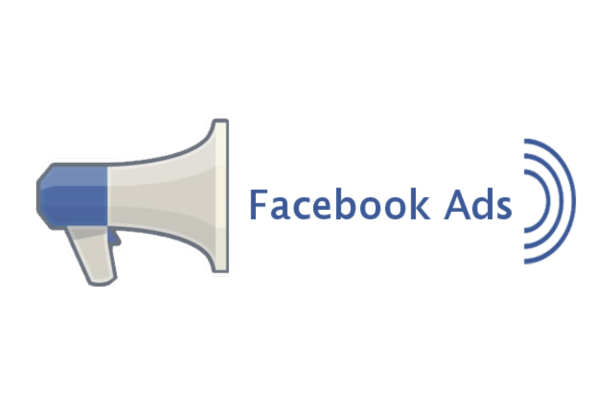
What Are Facebook Ads?
Facebook Ads are paid advertising placements on Facebook and its associated platforms, including Instagram, Messenger, and the Audience Network. These ads are designed to help businesses reach a targeted audience through various formats, such as image ads, video ads, carousel ads, and stories. Unlike organic posts, which rely on followers seeing and engaging with your content, Facebook Ads allow businesses to expand their reach to people who may not already follow their page but are likely to be interested in their products or services.
How Facebook Ads Work
Facebook Ads operate on a pay-per-click (PPC) or pay-per-impression (CPM) model, meaning businesses can choose to pay either when someone interacts with their ad or based on the number of times the ad is displayed. These ads are created and managed through Facebook’s Ads Manager, a comprehensive platform that allows businesses to design campaigns, define their goals, and monitor performance in real-time.
The process begins with selecting an advertising objective, which can range from increasing website traffic and generating leads to driving sales or boosting brand awareness. Once the objective is set, advertisers can create highly specific audience segments based on demographics, interests, behaviors, and even life events. For example, if you’re a beauty professional offering skincare services, you can target women aged 25-45 who are interested in skincare, wellness, or beauty products.
Facebook also allows for retargeting—reaching users who have previously interacted with your business, such as visiting your website or engaging with your social media posts. This feature makes it easier to convert warm leads into paying customers by staying top-of-mind.
Why Start with Social Media Ads?
For beauty businesses with limited budgets, Facebook and Instagram ads often provide the best entry point into paid advertising. These platforms offer:
Lower cost per lead (CPL)
Extensive targeting options
Visual-first advertising opportunities
Broader reach potential
Ad Formats
Facebook Ads offer a variety of formats to suit different marketing needs:
Image Ads: Simple yet effective, these ads use a single image and a short caption to convey your message.
Video Ads: Perfect for storytelling, tutorials, or showcasing products in action, video ads tend to capture attention quickly.
Carousel Ads: These allow you to showcase multiple products or features in one ad, with users swiping through different images or videos.
Story Ads: Designed for full-screen engagement, these ads appear in Facebook and Instagram stories and are great for creating immersive experiences.
Lead Generation Ads: These ads include built-in forms, making it easy for users to provide their contact information without leaving Facebook.
Shopping Ads: Ideal for e-commerce businesses, these ads display products directly within Facebook or Instagram, enabling seamless shopping experiences.
Why Facebook Ads Are Effective
Advanced Targeting: Facebook’s powerful data collection allows advertisers to target users with unparalleled precision. You can create audience segments based on interests, location, behavior, and even specific actions users have taken online.
Massive Reach: With billions of active users worldwide, Facebook Ads provide access to a vast audience across multiple platforms.
Cost-Effective Options: Facebook Ads can fit any budget, from small businesses with limited resources to large-scale enterprises running global campaigns.
Detailed Analytics: Facebook Ads Manager provides robust reporting tools, offering insights into impressions, clicks, conversions, and ROI. This helps businesses optimize campaigns for better performance.
Multi-Platform Integration: Since Facebook owns Instagram, you can easily run ads on both platforms from a single campaign, maximizing your reach.
The Cost Advantage
Working with experienced marketers is one of the smartest investments a business can make when it comes to social media advertising. The difference in cost per lead (CPL) between do-it-yourself (DIY) advertisers and professional marketers is often staggering. DIY advertisers, who may lack expertise in ad targeting, copywriting, and optimization, might spend $30-$40—or even more—for a single lead. In contrast, professional marketing agencies use proven strategies, data-driven insights, and platform expertise to achieve CPLs as low as $1.
This dramatic cost efficiency stems from the ability of experienced marketers to refine ad targeting, choose the right audience segments, and craft compelling ad creatives that resonate with users. They also conduct A/B testing to identify what works best, constantly optimizing campaigns to minimize wasted spend and maximize results. Over time, these savings compound, making a significant difference in the overall return on investment (ROI) of a marketing campaign.
For small businesses with tight budgets, reducing CPL by even a few dollars can mean the difference between breaking even and turning a profit. For larger businesses, these efficiencies allow them to scale their campaigns without ballooning costs. The expertise of professional marketers ensures that every dollar spent works harder to bring in high-quality leads, making their services not just an expense but a high-value investment.
The Brand Awareness Factor
Social media advertising is one of the most effective tools for building brand awareness and recognition in today’s digital age. Unlike traditional advertising channels, social media offers dynamic options for consistent exposure, strategic targeting, and retargeting—all of which help establish your brand as the go-to authority in your niche.
One concept that marketers often reference is the “attorney effect.” This phenomenon occurs when a business becomes so visible and consistently present in a specific market that it’s the first name people think of when they need that service. Think of it like the way people immediately recall certain lawyers or real estate agents because of their dominant local advertising efforts. With social media ads, businesses can replicate this effect at a fraction of the cost of traditional media campaigns.
Key Benefits of Social Media Advertising for Brand Awareness
Dynamic Reach: Social media allows businesses to target specific demographics, interests, and behaviors, ensuring their ads reach the right audience.
Cost Efficiency: Compared to traditional advertising, social media ads can achieve greater visibility at a lower cost.
Enhanced Recognition: Repeated exposure through ad campaigns builds familiarity and trust, making your brand a go-to choice.
Improved Targeting: Retargeting features let you reach users who’ve already interacted with your brand, increasing conversion rates.
Localized Impact: Ads can be geo-targeted to ensure visibility in your local market, helping you dominate your niche.
The Role of Consistency
Consistency is the backbone of effective social media advertising. Through regular ad campaigns that target and retarget your ideal audience, your brand stays top-of-mind.
Trust Building: Even if a potential customer doesn’t immediately convert, consistent exposure builds trust and familiarity over time.
Conversion Readiness: Seeing your brand repeatedly increases the likelihood that customers will choose you when they’re ready to buy.
The Power of Retargeting
Retargeting takes your brand recognition to the next level by reaching warm leads—users who’ve already shown interest in your business.
Custom Engagement: Retargeting allows you to show specific ads based on users’ previous interactions, such as visiting your website or watching a video.
Higher Conversion Rates: Warm leads are more likely to convert, and retargeting helps move them through the sales funnel.
Reinforced Authority: Every additional ad impression strengthens your position as the trusted choice in your niche.
Example: Retargeting in Action
For instance, an esthetician specializing in permanent makeup can use strategic retargeting to reach users who:
Clicked on a microblading ad but didn’t book an appointment.
Visited the website to browse services but didn’t fill out a contact form.
Engaged with a video showcasing microblading techniques.
The Power of Combined Strategies
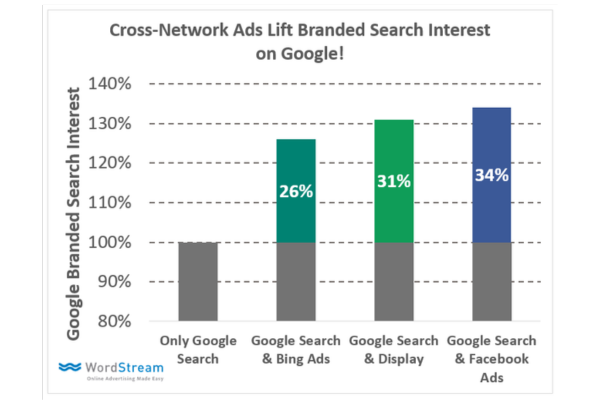
The Customer Journey: Connecting the Dots Across Platforms
Understanding the customer journey—how people move between platforms and make decisions—is essential for optimizing your advertising strategy. Today’s customers rarely convert on the first touchpoint. Instead, their decision-making process involves multiple stages and platforms, each playing a critical role in building trust and driving conversions.
Many potential customers begin their research on Google. They search for solutions, compare options, and evaluate pricing, often forming an initial impression of your business. Appearing at the top of Google’s search results—whether through paid ads or strong SEO—positions your brand as a credible choice from the start. But this is just the beginning.
The next step often involves repeated exposure on social media. Customers might not make an immediate purchase decision, but consistent reminders through targeted social media ads keep your brand top-of-mind. This phenomenon reflects a key principle in marketing: familiarity builds trust. Seeing your ads repeatedly on platforms like Facebook and Instagram reinforces your authority, making potential customers feel more confident choosing your business over competitors.
How to Optimize Each Stage of the Journey
The Research Phase (Google):
Use Google Ads to ensure your business is highly visible for relevant searches (e.g., “permanent makeup near me” or “affordable esthetician services”).
Highlight clear benefits and unique selling points in your ad copy to capture interest early.
Include a compelling call-to-action (CTA) that encourages users to visit your website or contact you.
The Decision Phase (Social Media):
Leverage Facebook and Instagram ads to retarget users who have visited your website or engaged with your content.
Create visually engaging ads—like testimonials, before-and-after photos, or educational videos—that showcase your expertise and build trust.
Use frequency to your advantage; showing ads consistently over time keeps your brand fresh in users’ minds.
Closing the Sale:
Use social proof, such as reviews or case studies, to reassure customers they’re making the right choice.
Offer limited-time promotions or discounts to create a sense of urgency.
Ensure your website and booking process are seamless, mobile-friendly, and easy to navigate.
A Real-Life Analogy
Think of this journey like deciding on an esthetics bootcamp. Someone might first hear about it through a Google search while comparing options, but they decide to sign up after seeing consistent testimonials, posts, and event reminders across social media. Each interaction reinforces the value of the offering and makes the decision to enroll feel like a natural next step.
The Facebook Pixel: Your Secret Weapon
One of the most powerful tools in digital advertising is the Facebook Pixel. This small piece of code on your website allows you to:
Track website visitors
Retarget potential customers
Create custom audiences
Measure conversion rates
Optimize ad performance
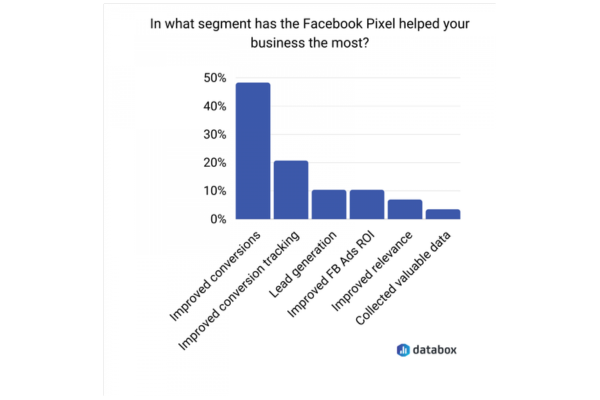
The Omnipresent Marketing Strategy
The most effective approach combines both Google and social media advertising to create an omnipresent marketing strategy. This means potential customers see your brand:
When they search for services
While browsing social media
Through retargeting ads
Across multiple platforms and touchpoints
Starting Your Advertising Journey
When you’re a new business owner, stepping into the world of paid advertising can feel overwhelming. But with the right approach, you can establish a strong foundation for your marketing efforts while keeping costs manageable.
1. Start Small with Facebook and Instagram Ads
These platforms are ideal for beginners due to their user-friendly tools and massive audience reach. Here’s how to start:
Begin with a Small Daily Budget: Allocate $5–$10 per day to test the waters. This approach minimizes risk while allowing you to experiment with different ad strategies.
Focus on Brand Awareness: In the early stages, the goal is not immediate sales but building recognition. Use engaging visuals and messages to introduce your business to potential customers.
Test Different Ad Formats and Messages: Experiment with static images, videos, carousel ads, and stories. Pay attention to which formats and messages generate the most engagement.
Track Your Results Carefully: Use platform analytics to monitor performance metrics such as reach, engagement, and click-through rates. These insights will guide your future ad decisions.
2. Expand to Google Ads as You Grow
Google Ads can supercharge your advertising strategy once you have an established online presence. Here’s how to make the most of this platform:
Optimize Your Google Business Profile: A well-optimized profile enhances your visibility in local search results and provides crucial information to potential customers.
Develop a Strong Website: Ensure your website is professional, easy to navigate, and mobile-friendly. Your website often serves as the first impression of your business.
Focus on Local Search Terms: Use keywords like “best esthetician near me” or “permanent makeup in [city name]” to attract nearby customers actively seeking your services.
Monitor Your Cost per Acquisition (CPA): Regularly evaluate how much you’re spending to acquire each customer and adjust your campaigns to improve efficiency.
Common Pitfalls to Avoid
While advertising can be transformative, avoiding common mistakes is crucial to maximizing your ROI
1. Don’t Buy Followers
Buying followers might seem like a quick way to boost your social media numbers, but it comes with significant drawbacks:
Low Engagement: Purchased followers rarely interact with your content, which can lower your overall engagement rates.
Harm to Performance: Algorithms prioritize engagement, so inactive followers can negatively impact your reach and visibility.
Focus on Authentic Growth: Build your audience organically by creating valuable content and engaging with your community.
2. Don’t Neglect Your Website
Your website is the cornerstone of your online presence. If it’s poorly designed or difficult to use, you risk losing potential customers. Ensure the following:
Mobile-Friendliness: With most users accessing websites on their phones, a mobile-optimized design is non-negotiable.
Clear Calls to Action (CTAs): Guide visitors with CTAs like “Book Now,” “Contact Us,” or “View Services.”
Ease of Booking/Contact: Make it simple for customers to take the next step, whether it’s booking an appointment or sending a message.
Fast Load Times: A slow website can frustrate users and increase bounce rates. Optimize for speed to ensure a seamless experience.
3. Don’t Skip the Facebook Pixel
The Facebook Pixel is a powerful tool for tracking and improving your ad performance:
Install It Immediately: The sooner you install the pixel, the sooner it can start gathering valuable data.
Track Conversions: Use the pixel to monitor actions users take on your website, such as bookings or purchases.
Build Retargeting Audiences: Re-engage users who’ve interacted with your website or ads but haven’t converted.
Optimize Campaigns: The pixel helps refine your campaigns, ensuring better targeting and higher ROI.
The 80/20 Principle in Beauty Business Marketing
The 80/20 principle is a vital concept in beauty business marketing: in most industries, 80% of the business goes to 20% of the service providers. This creates both challenges and opportunities for new and established businesses alike.
Challenges
Breaking into the top 20% can be tough, but understanding these hurdles helps you prepare:
Standing Out in a Crowded Market: Many beauty businesses compete for the same clients, making differentiation essential.
Building Initial Trust and Credibility: Customers often gravitate toward established providers with proven track records.
Competing with Established Providers: These businesses have larger budgets, more reviews, and greater visibility.
Opportunities
For every challenge, there’s an opportunity to gain an edge:
Learning from Successful Competitors: Analyze what the top providers in your area are doing well and adapt those strategies for your own business.
Targeting Underserved Market Segments: Identify niches or demographics that are overlooked by competitors and tailor your services to meet their needs.
Providing Unique Value Propositions: Focus on what sets your business apart, whether it’s exceptional customer service, innovative techniques, or exclusive products.
Advanced Marketing Strategies
Competitive Analysis: Learning from the Best
Understanding what works for your competitors can reveal valuable insights to shape your own strategy. Here’s how to conduct a thorough analysis:
Study Their Social Media Presence: Examine their posting frequency, engagement levels, and the type of content that resonates with their audience. Are they focusing on tutorials, promotions, or testimonials?
Observe Their Pricing Strategy: Identify whether they’re positioned as high-end, mid-range, or value-focused. This insight helps you understand their target demographic and position your services accordingly.
Identify Their Target Audience: Use tools like Meta Ads Library or social media insights to understand who they’re targeting and how.
Look for Gaps in Their Service Offerings: Are there services they don’t provide or audiences they’re ignoring? Filling these gaps could give you a competitive edge.
Price Positioning
Your pricing strategy defines your place in the market and shapes customer perceptions. Understanding the dynamics of pricing can help you align your offerings with customer expectations
Understanding market positioning is crucial:
High-end providers create market awareness
Mid-range providers can capture overflow
Value providers can serve price-sensitive customers
Content Strategy: Elevating Your Brand
Even in a world driven by paid advertising, the quality of your content plays a pivotal role in conversions and customer loyalty. Focus on creating content that builds trust and showcases your expertise:
Educational Content: Share tutorials, explain beauty techniques, or discuss industry trends to position yourself as a knowledgeable professional.
Showcase Your Work: Use high-quality images and videos to highlight your skills. Before-and-after photos can be especially compelling.
Client Testimonials: Feature testimonials in text, video, or carousel ad formats to establish social proof and build trust.
Demonstrate Expertise: Go live on Instagram or Facebook, answering FAQs or demonstrating services to engage your audience in real-time.
Measuring Success: Tracking What Matters
To refine your marketing strategy, you need to measure its effectiveness. Focus on these key performance indicators (KPIs) and maintain a system of regular analysis:
Key Performance Indicators (KPIs):
Cost Per Lead (CPL): How much are you spending to acquire a single lead? Lowering CPL improves profitability.
Conversion Rates: What percentage of leads are becoming paying customers? This indicates how effective your funnel is.
Return on Ad Spend (ROAS): For every dollar spent on ads, how much revenue are you generating?
Engagement Rates: How often is your audience interacting with your content? This reflects the relevance of your ads.
Website Traffic: Increased traffic signals greater interest in your services.
Regular Analysis:
Review Weekly Performance: Examine ad performance, engagement, and conversion data on a weekly basis to identify trends.
Test New Ad Formats: Experiment with formats like reels, stories, and carousel ads to keep your strategy fresh.
Adjust Targeting Parameters: Refine your audience targeting based on performance data.
Optimize Landing Pages: Ensure your landing pages align with your ad copy and provide a seamless user experience.
The Future of Beauty Business Advertising
As we navigate 2024 and beyond, these emerging trends will continue to shape the landscape of beauty business marketing:
Integration of Platforms
Cross-Platform Retargeting: Engage customers who interact with your ads on one platform by retargeting them on others.
Unified Messaging: Maintain a consistent tone, style, and message across all platforms to strengthen brand identity.
Consistent Branding: Ensure your visuals, logos, and colors remain uniform to reinforce brand recognition.
Multi-Channel Campaigns: Combine the strengths of Google Ads, social media, and email marketing for a comprehensive approach.
Focus on Mobile
With the majority of users accessing content via mobile devices, adopting a mobile-first strategy is critical:
Mobile-First Design: Ensure websites and landing pages are optimized for mobile users.
Quick-Loading Content: Speed is essential; slow-loading pages lead to higher bounce rates.
Easy Booking Systems: Make scheduling appointments straightforward and accessible via mobile.
SMS Marketing Integration: Use text messaging for reminders, promotions, and direct communication with clients.
Video Content: The King of Engagement
Video continues to dominate social media, making it an essential tool for beauty businesses:
Short-Form Videos: Platforms like TikTok, Instagram Reels, and YouTube Shorts are perfect for quick tutorials or showcasing results.
Live Demonstrations: Host live sessions to engage directly with your audience, answering questions and demonstrating techniques.
Behind-the-Scenes Content: Give followers a glimpse of your day-to-day operations to humanize your brand.
Client Testimonials: Video testimonials are powerful tools for building trust and authenticity.
Conclusion
Success in beauty business advertising in 2025 requires a strategic approach that combines both Google and social media advertising. While Facebook and Instagram ads provide an excellent starting point for businesses with limited budgets, the ultimate goal should be to develop an omnipresent marketing strategy that reaches potential clients across multiple platforms.
Remember these key points:
Start with social media advertising if budget is limited
Add Google Ads as your business grows
Use the Facebook Pixel for retargeting
Focus on reducing cost per lead
Maintain consistent branding across platforms
Track and analyze your results
Most importantly, don't wait to start advertising. In today's digital landscape, paid advertising isn't optional – it's essential for business growth. Whether you choose to manage your advertising in-house or work with professionals, taking action now will position your beauty business for success in an increasingly competitive market.
For beauty business owners ready to take their marketing to the next level, consider working with experienced professionals who understand the unique challenges and opportunities in the beauty industry. The right partnership can help you achieve better results while saving time and money in the long run.
Remember, marketing is indeed a battlefield with numerous decisions to make. But with the right strategy and support, you can navigate it successfully and grow your beauty business to new heights.
Did you know most customers who are looking for beauty services are looking on Google? There are actually a few very important things you need to be doing on Google to get ranked high so that you can get in front of those customers first. I actually just wrote a full workbook on it!Get my comprehensive guide 'How to Write Your Beauty Business #1 on Google' - completely FREE! Inside, you'll discover:
Step-by-step SEO techniques tailored specifically for beauty businesses
Real examples from successful salon and spa owners
Practical templates you can implement immediately
Why am I offering this for free? Because I believe every beauty business deserves to thrive online. Your expertise should be easily discoverable by the clients who need your services.
Don't leave your Google rankings to chance. Download your free guide today and start attracting more clients to your beauty business!

